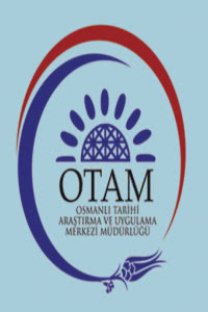An Inquiry into the Ottomans' Knowledge and Perception of the Gypsies in the late 19th Century
19. yüzyıl Sonlarında Osmanlıların Çingeneler Konusundaki Bilgileri ve Çingene Algısı Üzerine Bir Araştırma
___
BOA. Y. MTV. (Başbakanlık Osmanlı Arşivleri, Yıldız Mütenevvî Maruzat Evrak Bölümü) 47/180, 24. C. 1308.AHMET MİTHAT EFENDİ, Çingene. Istanbul, Sel, 2009.
ŞEMSEDDİN SAMİ (FRASCHERY), هناکنچ , in Kamûs-ül Âlâm. Constantinople, Mihran, 3rd vol., 1891, pp. 1880-1881.
List of Works Cited AKGÜNDÜZ, Ahmed, Osmanlı Kanunnâmeleri ve Hukukî Tahlilleri: Osmanlı Hukukuna Giriş ve Fatih Devri Kanunnâmeleri, Fey Vakfı Yayınları, vol. I, Istanbul 1990.
AKSU, Mustafa, Türkiyede Çingene Olmak, 2nd edition, Istanbul, Kesit, 2006.
ANHEGGER, Robert, İNALCIK, Halil (eds.), Kānūnnāme-i Sultānī ber Mūceb-i Örf-i Osmānī : II. Mehmed ve II. Bayezid Devirlerine ait Yasaknāme ve Kānūnnāmeler, TTK, Ankara 1956.
BELDICEANU, Nicoarǎ, Les actes des premiers sultans conservés dans les manuscrits turcs de la Bibliothèque nationale à Paris, Mouton, vol. I, Paris/La Haye 1960.
BOUILLET, Marie-Nicolas, Bohémiens, in Dictionnaire Universel dHistoire et de Géographie, 5th augmented edition. Alger, L. Hachette, Paris 1847, p. 229.
ÇELİK, Faika, Gypsies (Roma) in the orbit of Islam: the Ottoman experience (1450- 1600) (unpublished MA thesis), McGill University, Montreal 2003.
DANKOFF, Robert, 2006, An Ottoman mentality: The World of Evliya Çelebi, 2nd edition, Brill, Leiden/Boston 2006.
ESEN, Nüket, Karı Koca Masalı ve Ahmet Mithat Bibliyografyası. Kaf, Istanbul 1999.
FAROQHI, Suraiya, The Ottoman Empire and the World Around It, I. B. Tauris, London/New York 2005.
FRASER, Angus M., The Gypsies, Oxford, UK; Cambridge, Mass. USA, Blackwell 1992.
FRIEDMAN, Victor. A., DANKOFF, Robert, The earliest known text in Balkan (Roumelian) Romani : A passage from Evliya Çelebis Seyāhat-nāme, JGLS, vol. 5, n° 1, 1991, pp. 1-21.
GOEJE, Michael Jan (de), Mémoire sur les migrations des Tsiganes à travers lAsie, Leide, E. J. Brill (coll. « Mémoires dhistoire et de géographie orientales par M. J. de Goeje, n°3), 1903.
HALLIDAY, William Reginald, Some Notes upon the Gypsies of Turkey, JGLS, 3rd Series, vol.1, 1922, pp. 163-189.
HALLIDAY, William Reginald, Folklore studies ancient and modern, Methuen, London 1924.
İNALCIK, Halil, Foreword, in Dimitrie Cantemir. Historian of South East European and Oriental Civilizations, Alenxandru Dutu & Paul Cernovodeanu (eds.), Association internationale détudes du sud-est européen, Bucharest 1973.
LEVEND, Agâh Sırrı, Şemsettin Sami, Ankara Üniversitesi Basımevi, Ankara 1969.
LIEGEOIS, Jean-Pierre, Roms en Europe, Strasbourg, Editions du Conseil de lEurope, janvier 2007.
ONUR, Oral Çingeneler, Tarih ve Toplum, 137, May 1995, p. 16-22.
OPRIŞAN, Ana, An overview of the Romanlar in Turkey, Adrian Marsh, Elin Strand (eds.), Gypsies and the Problem of Identities: Contextual, Constructed and Contested: Papers presented at the First International Romani Studies Conference in Istanbul, at the Swedish Research Institute in Istanbul, April 10-12, 2003, Mas, Transactions Series vol. 17, Istanbul 2006, pp. 163-169.
ORTAYLI, İlber, İmparatoluğun En Uzun Yüzyılı, 3rd edition. Hil, Istanbul1995.
SOULIS, George C., The Gypsies in the Byzantine Empire and the Balkans in the Late Middle Age, Dumbarton Oaks Papers, vol. 15, 1961, pp. 141-165.
TANPINAR, Ahmet Hamdi, Histoire de la littérature turque du XIXe siècle, Faruk Bilici (ed.). Translated by F. Bilici, C. Erikan, F. Fidan, G. Mete-Yuva. Arles, Actes Sud, 2011.
ULUSOY, Ömer, Les Etres en marge: les Tsiganes de lEmpire ottoman, Les Editions Isis, Istanbul 2013.
- ISSN: 1019-469X
- Yayın Aralığı: 2
- Başlangıç: 2006
- Yayıncı: Ankara Üniversitesi Osmanlı Tarihi Araştırma ve Uygulama Merkezi
Osmanlı-Avrupa Telgraf Hatlarında Sırbistan Emareti'nin Rolü
19. Yüzyılın İlk Yarısında Gülnar Yörükleri
Hüseyin Hilmi Paşa'nın Yemen Valiliği ve Ona Yapılan Suikast
An Inquiry into the Ottomans' Knowledge and Perception of the Gypsies in the late 19th Century
1897 Türk-Yunan Savaşı'nda Ecnebilerin Zararlarının Tazmîni Meselesi
Avrupalıların Gözlemlerinde Osmanlı Eğitimi ve Bilimi (16-18.Yüzyıllar)
Osmanlı Devleti ile Ermenistan Cumhuriyeti Arasındaki İlişkiler (1918-1920)
